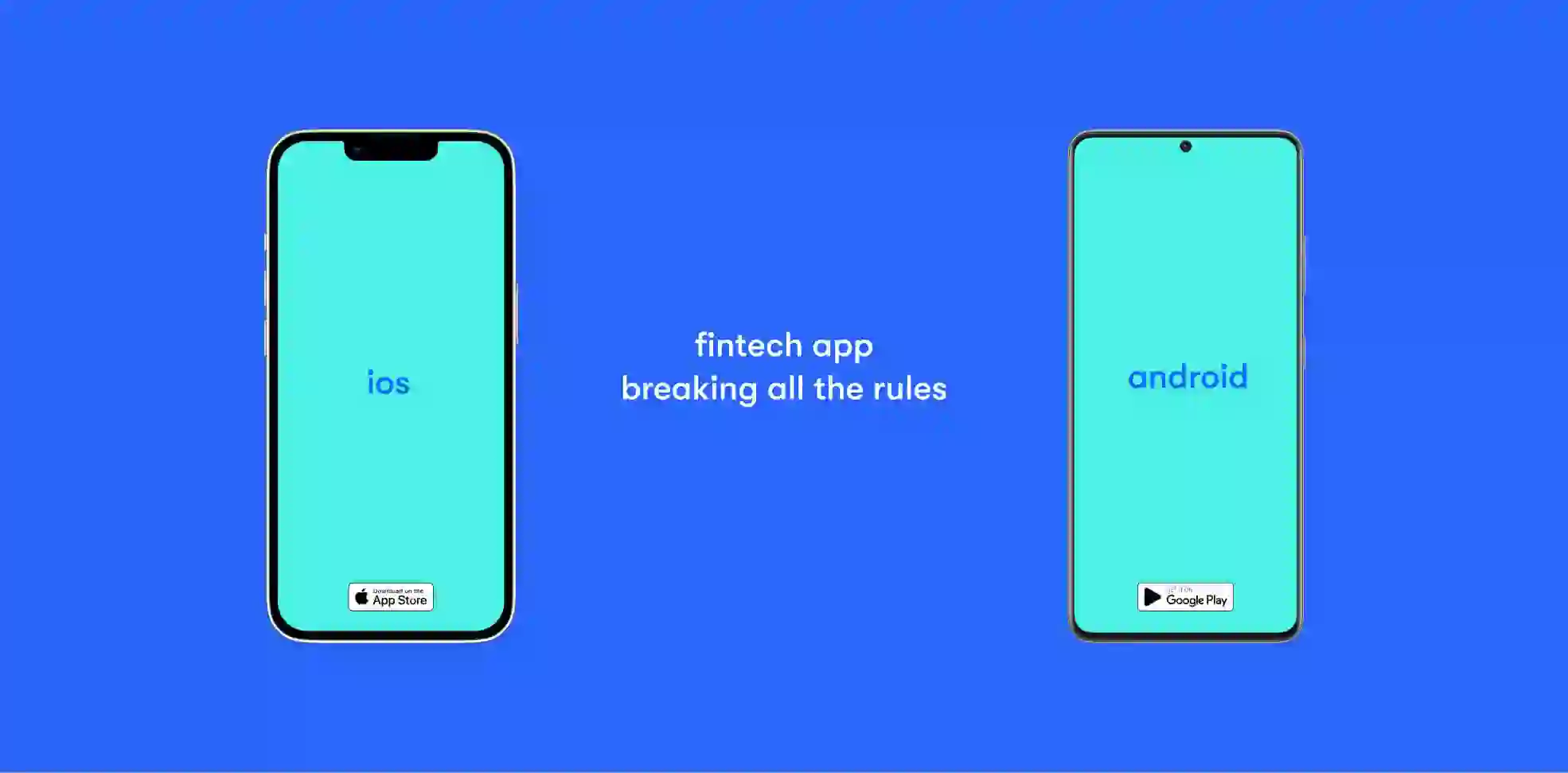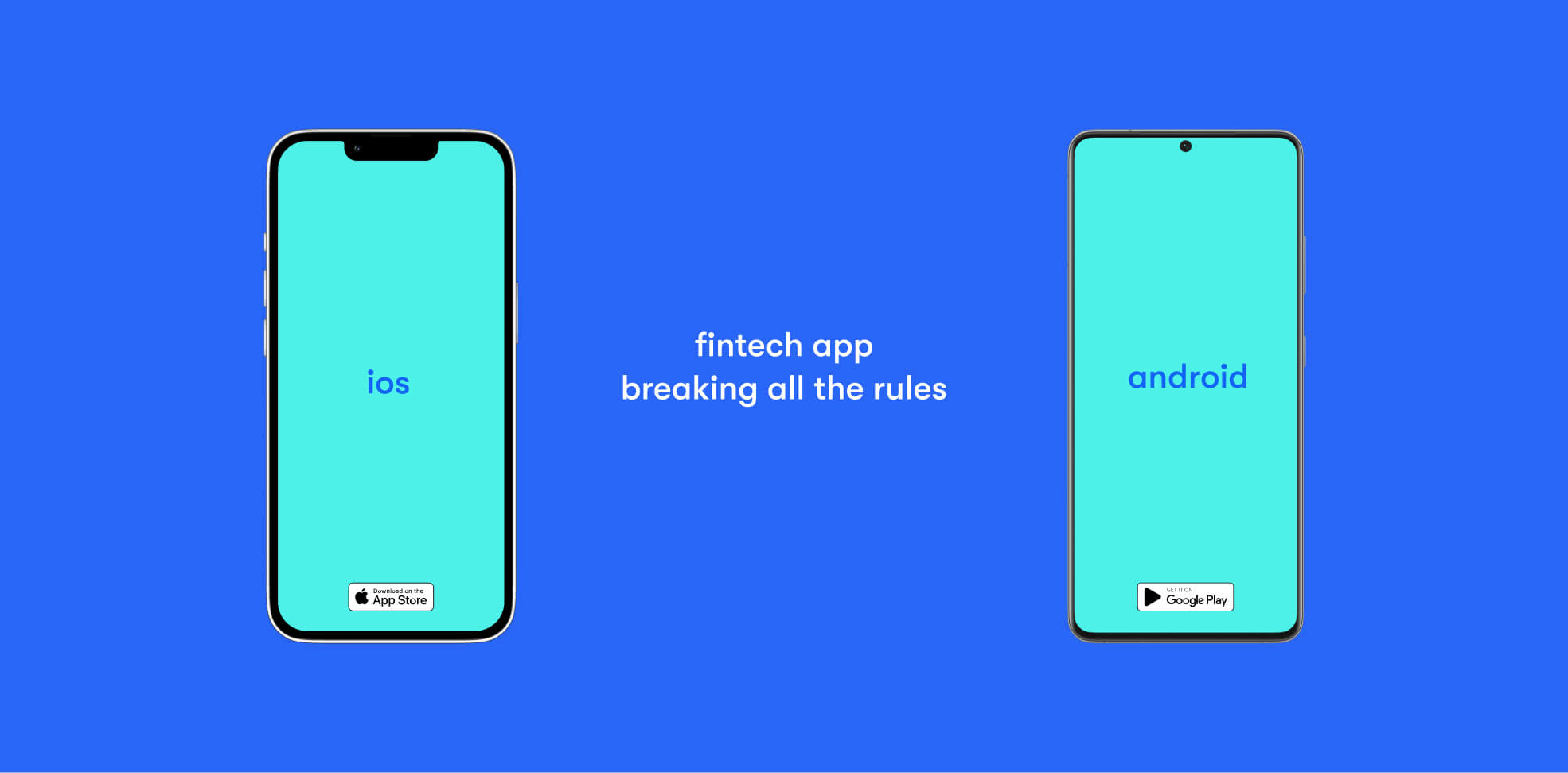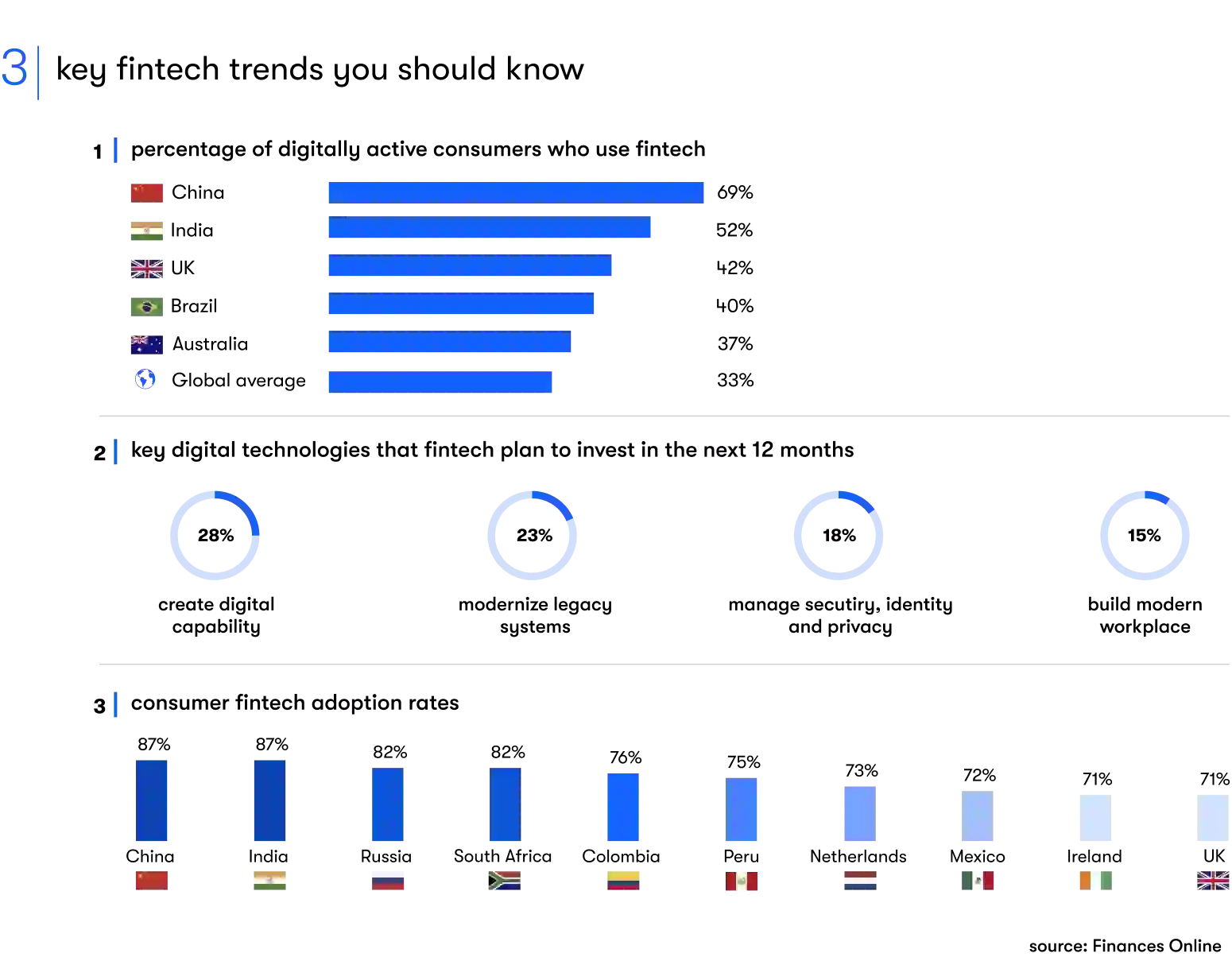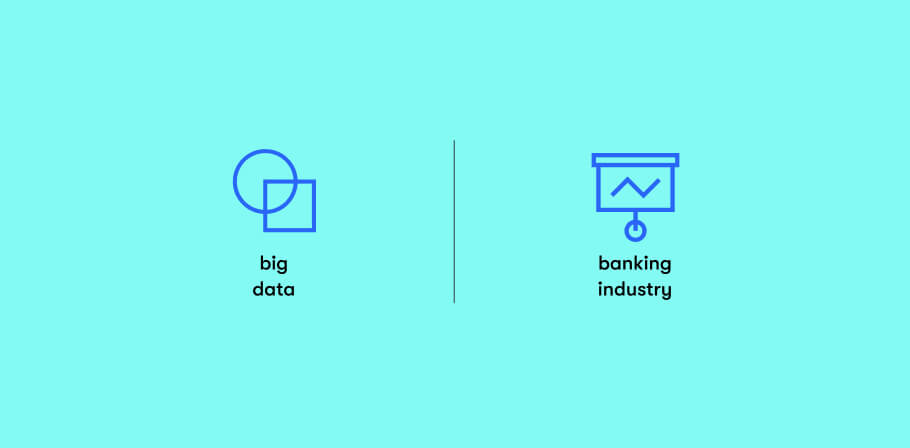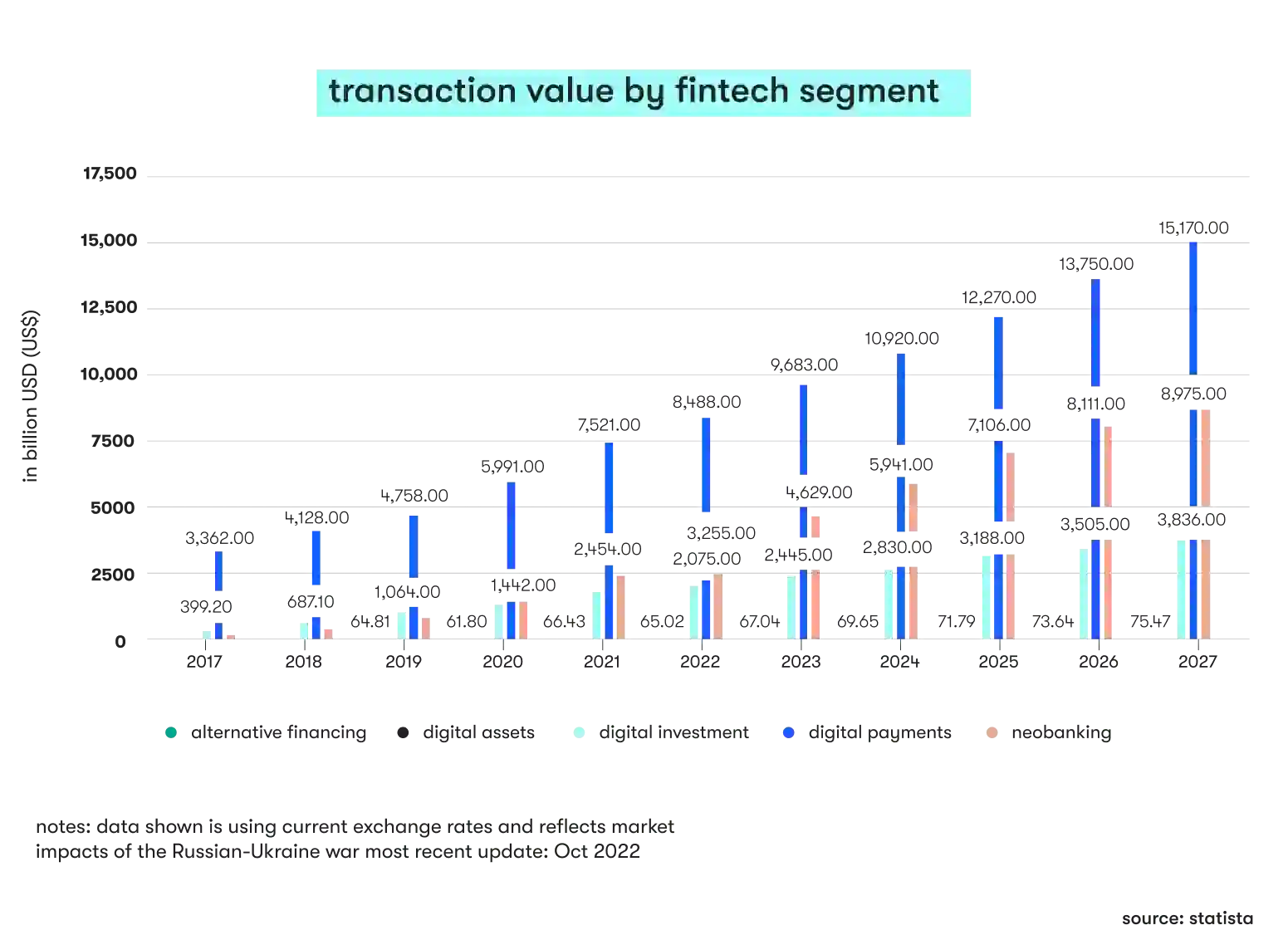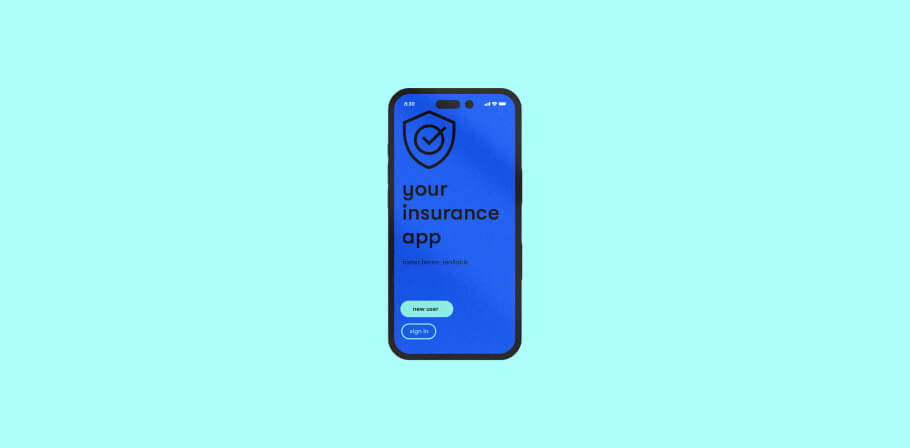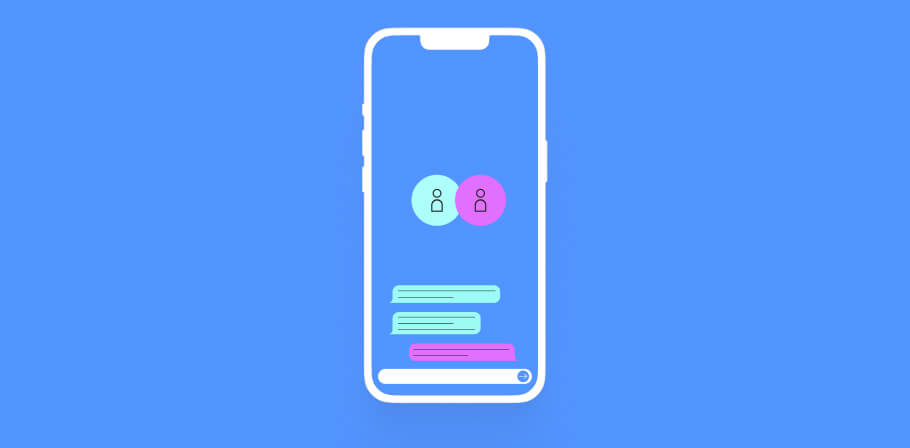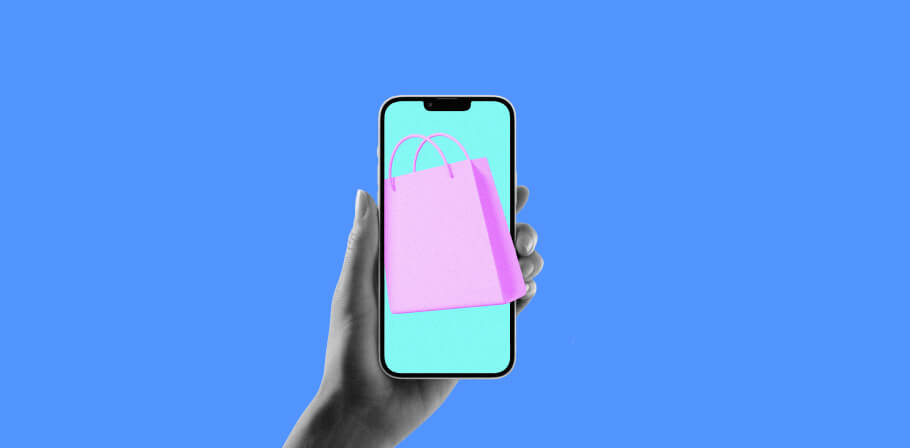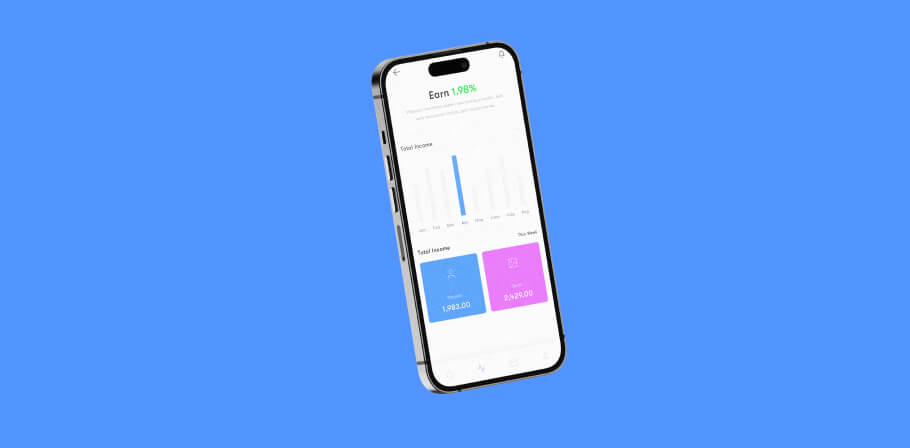Read this article to help wrap your head around the various types of fintech solutions and learn the fundamental principles behind building mobile apps for fintech on major mobile platforms. We’ll help you avoid common pitfalls and minimize development and maintenance costs. If you are a startup embarking on your first fintech app development journey, you’ll be able to draw valuable insights on:
- Monetization models
- Application types
- Essential features
- Tech stack
- Direct and indirect costs
Let’s get started.
Fintech application development for a booming market
2020 became a seminal year for many, if not all, industries. The ramifications of wide-scale lockdowns, heavy travel restrictions, switching to working from home, and deep revision of growth strategies, budgets, and priorities all contributed to banking challenges worldwide. This effect, however, was not invariably adverse.
In many industries, including the financial industry, this tectonic shift away from the familiar business paradigm spawned a variety of new services, service models, and approaches to addressing consumers’ needs. With people staying in their house and transacting from home or on the go more than ever in recorded industry, access to mobile banking, convenient digital payments and money transfer tools came to the forefront of users’ attention.
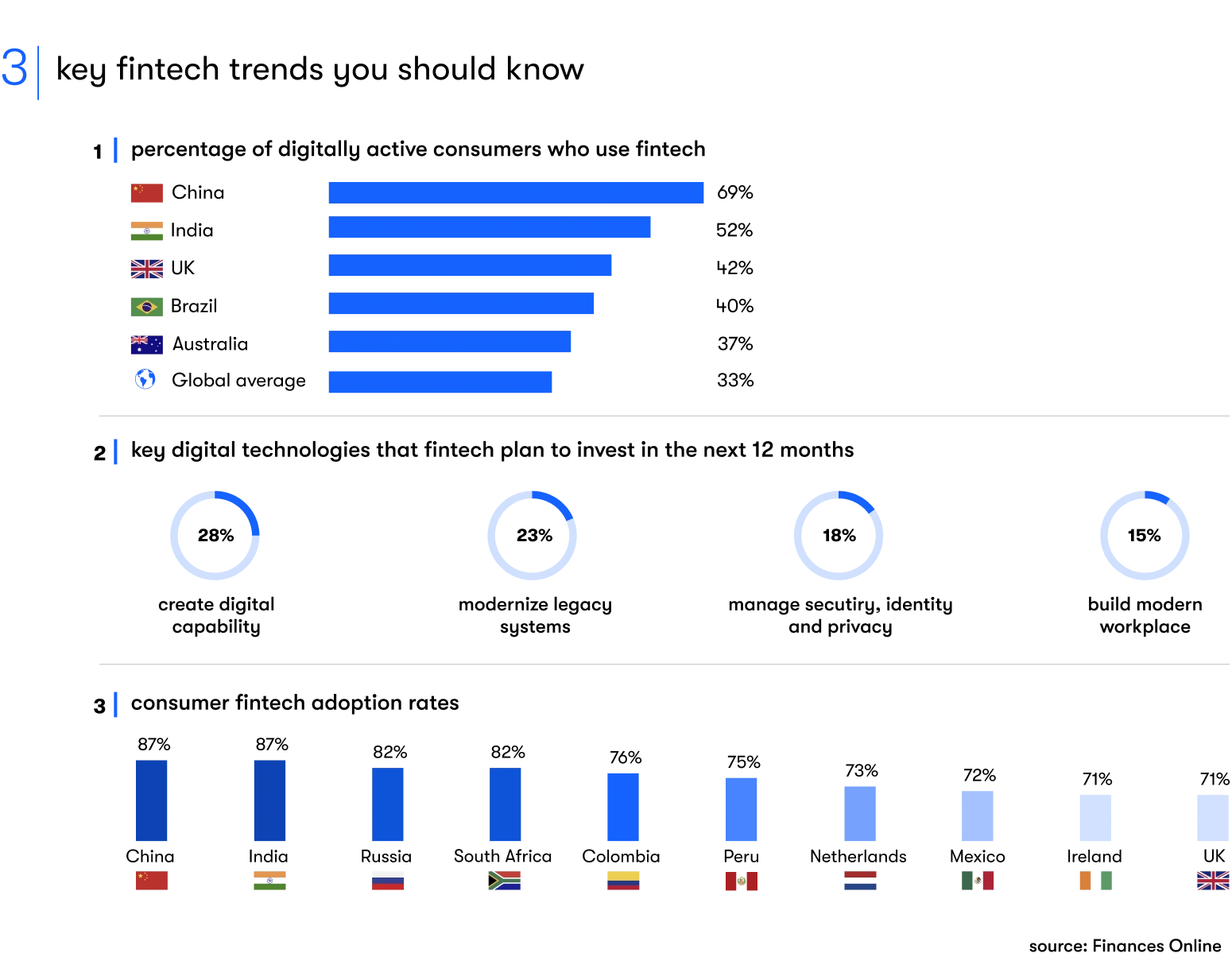
These and other factors contributed to the unprecedented spike of investment activities in the fintech market throughout 2021. The combined total of investments in the fintech industry in Q1-Q3 2021 reached a whopping 91.5 billion dollars, which is almost double that of all of 2020. The interest is clearly there, with dozens of unicorns stepping into the limelight this year, according to the State Of Venture Q3 ’21 report by CBInsights.
It’s evident that now could be the best time for traditional banks and fintech startups to build fintech apps that will reshape the landscape of the industry in the years to come and generate new value chains in local and international markets, including the C2C, B2C, and B2B spaces.
Monetizing your fintech app
If you’ve decided to create a fintech app, the first thing you need to do is choose a primary monetization model. Later on, once your app is up and running, you can introduce additional features and service options based on different monetization principles, but you have to start with something to begin returning on investments.
In principle, the difference in monetization models lies in who will ultimately be paying you. It can be the users of the service, third-party services/sellers, or a third party that is the beneficiary of all or some of the transactions originating from your app. Here are a few examples of the most common monetization models used by popular fintech companies today.
Subscriptions
The most commonplace and familiar model for anyone who has ever used an online service or mobile app of any sort. Users generally get a trial period ranging from a few days to a few weeks to explore the features and decide on its relevance to their needs. After that expires, users are then charged the cost of the chosen subscription at regular intervals (weekly, monthly or yearly).
Transactional fees
This model is mostly used by apps for mobile payments and payment systems, where fees can apply to either all or specific payment types. Payoneer and WorldRemit are good examples of cash exchange services that offer low rates on global money transfers with flexible options for receiving remitted funds. This monetization model can be used in addition to subscriptions or as the primary revenue channel.
Ads and referrals
If you build a large enough customer base, highly targeted ads and referrals from relevant advertisers can become the core of your fintech monetization strategy. Users can enjoy your services for free, but will be seeing highly personalized commercial offers from advertisers. The owner of the service gets paid for each conversion. For example, Mint uses this model for the free version of their service, combining it with other revenue-generation mechanisms for premium services, such as the ongoing monitoring of the user’s credit score.
Selling big data
Fintech apps are a perfect source of valuable, usable financial data pertaining to users’ spending habits, payment frequency, average spending, consumption of particular services, and much more. It is not uncommon for fintech companies to offer paid access to this data (anonymized, of course) to any interested third party looking to optimize their marketing or sales strategy with better targeting and high-quality data sets for their artificial intelligence and machine learning algorithms. (The above-mentioned Mint does that, as well.)
Paid access to APIs
Many fintech companies, mostly those operating a payment gateway and an array of associated services, offer convenient APIs that enable other companies to easily use them by making calls right from the code of their software products. Take Stripe, for example. Their API helps millions of businesses make and receive payments in any currency anywhere in the world without having to invest into building their own payment systems (which is expensive, requires regulatory compliance, and a team of top-notch experts). Access to an API usually requires a monthly subscription, and most providers also charge customers based on their API resource consumption.
Key functional domains to make a fintech app
Fintech is a huge industry with a variety of verticals and business models that keep evolving and converging all the time. Let’s take a look at some of the popular areas where financial technology is being actively used these days. If you are considering building a fintech app, you’ll want to check out these categories for inspiration.
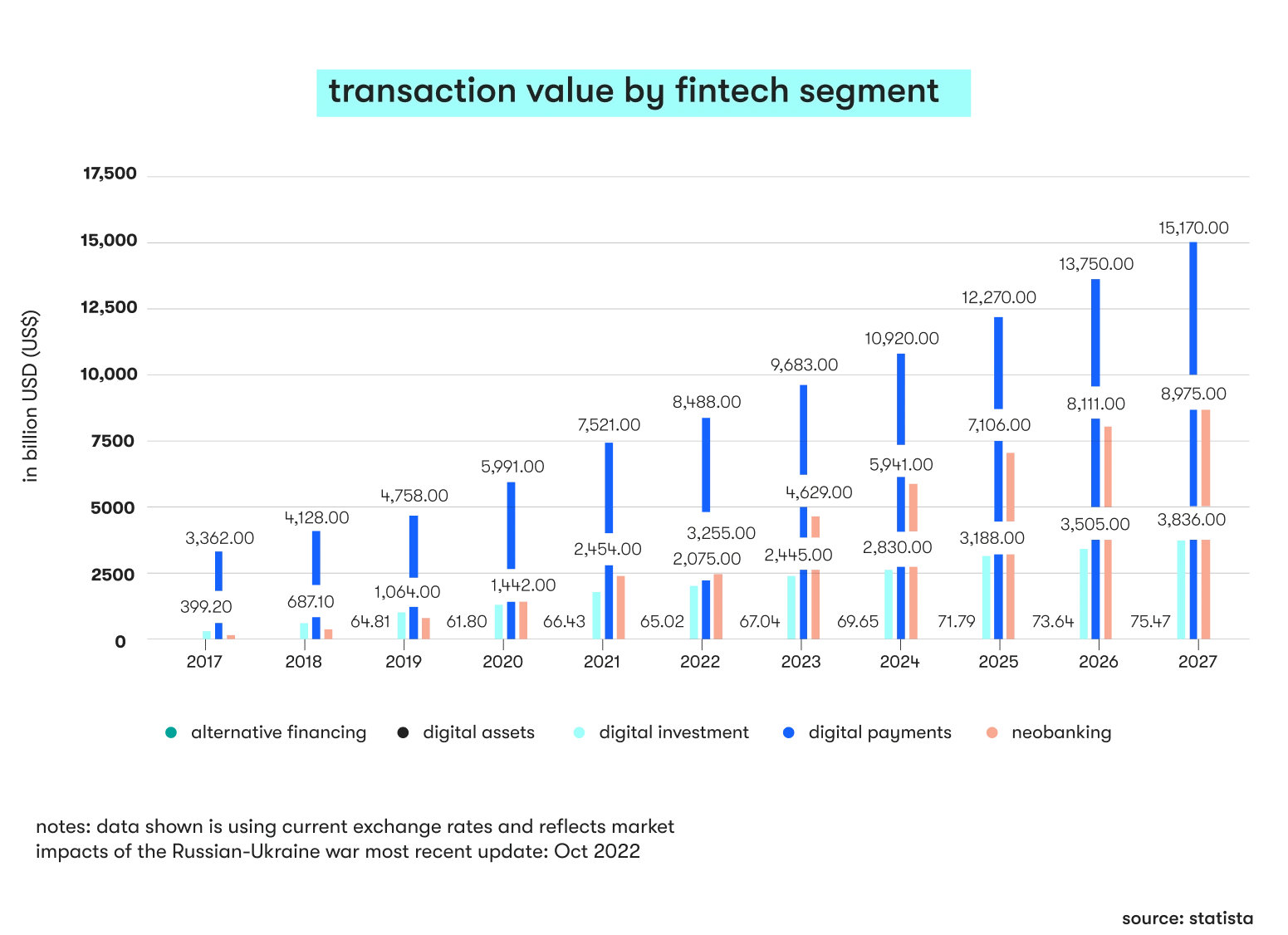
Digital banking
Generic banking apps have been around for a long time and can be found on the majority of smartphones in virtually any global region. Built to connect directly to users’ bank accounts, they offer everything necessary for managing personal funds, paying recurring bills and making SWIFT money transfers, generating spending reports and performing a variety of other essential daily operations. Banking app development can be performed by corresponding financial institutions or by third parties, such as Chime or Atom Bank, for example.
Payments and money transfers
Online payments and money transfers have traditionally been among the most popular and in-demand online services that replaced the sluggish and inflexible banks of the pre-digital era. Contactless payments and payments made via a QR code are on the rise. Companies like Klarna, Venmo, and Stripe have revolutionized payments for individuals and businesses, while money-transfer services like Payoneer, Wise, PayPal, and Revolut have made it incomparably easier for people around the world to transfer money to their friends and families.
Cryptocurrencies
Cryptocurrency is one of the hottest financial trends, and a driving force behind the rapid expansion of the fintech sector. Financial services in this area are mostly represented by crypto-exchanges, real-time investment and trading platforms, and multi-currency wallets supporting both fiat and digital currencies. Some of these wallets support blockchain technology for storing users’ data and financial records.
Robo-advising and stock trading
The dynamics of the stock market are so intense that trading requires not just knowledge, experience, and intuition, but also a great deal of automation and the use of advanced AI/ML algorithms for data analytics and trend detection. Robo-advisors are intelligent algorithmic platforms that assist users with wealth management and investment management for a fraction of the cost of similar services offered by human portfolio managers at banks. Popular applications in this market include SigFig, Robinhood, Wealthfront, Betterment, and Moneyfarm, to name a few.
Insurance
Although insurance may seem to be playing in a league of its own, it is also a bright representative of the modern fintech industry. Next-gen insurance companies rely on the analysis of big data and use of artificial intelligence to create highly personalized insurance policies aligned with a variety of customer preferences and interests. At the same time, they offer full compliance with relevant regtech standards and legal requirements of the customer’s country/state of residence.
Budgeting and financial planning
Personal finance management apps are extremely popular among users. PocketGuard, Honeydue, Personal Capital, Goodbudget, YNAB, Mint — these are just a few examples of handy mobile applications that facilitate the process of making informed financial decisions and boast outstanding UI/UX characteristics. These apps automatically monitor users’ expenses, warn about overspending in sensitive categories and generally help keep their budget in check.
Lending and financing
Another massively popular category of fintech apps, it includes fintech solutions for microfinancing and POS lending apps. These apps are gaining increased popularity as people spend more time shopping online during the pandemic and traditional banks cannot offer the same speed and flexibility to modern consumers. This category also includes P2P lending services that allow people to borrow money from each other and charge a broker’s commission for every transaction.
Fintech application development: features and tech stack
Now that we’ve taken a deep dive in the types of fintech solutions and their monetization models, it is time to learn how to develop a fintech app the right way. If you hire a reliable software development company for that, they will know the drill, but it’s nonetheless useful to know what the process implies.
It goes without saying that every fintech app is unique in and of itself, and exists within its own ecosystem, but there is a basic set of essential features that are usually found in all financial software products.
Features on the user side Effortless account management A bank account is the first thing that your customers will bring to your app, so it’s your responsibility to make it easy for your clients to manage their funds, debit and credit cards, checking and savings accounts. | Features on the admin side Advanced automation Automation is key to reducing delays in business-critical workflows and offering your users the best customer experience possible by boosting the speed of application data processing. |
Ease of access to key tools and features Most financial apps are used on the go, which means that a seamless user experience is an absolute must-have in fintech apps development. Make sure your target audience can fulfill their goals within a few taps. | Data analytics and executive dashboards If you intend to make a fintech app, make sure your business analysts have work to do after the launch. Use the cloud to collect valuable app usage data, draw actionable insights from it and make improvements to your service on a regular basis. |
Customizable user interface When you design a fintech app, you have to make sure that the interface can be customized to the needs of particular users. Some prefer lightweight, minimal views, while others opt for the maximum level of detail. | Best-in-class security with multitier authentication When you are dealing with users’ money and confidential information, security should be your number one priority. Some helpful online banking tips include biometric identification, fingerprint scanning, two-factor authentication, and fraud prevention tools to ensure end-to-end data protection. |
Visualization of key parameters Numbers are great, but most users prefer the ability to take a quick glimpse of their finances and card balances in the form of diagrams and charts with trend highlights, as well as easily readable green and red areas indicating the status of monitored parameters. | AI-powered recommendations AI can come in extremely handy for processing large volumes of unstructured data or just predicting what a user may need next based on what they did before. Deep personalization is king these days, and implementing AI into a fintech project is your fast lane. |
Alerts and notifications Make sure to keep your users fully informed about the changes taking place in their accounts or opportunities that are relevant for them by using push notifications and omni-channel messaging. | Deep integration with banks As independent as the fintech industry may seem, it still largely depends on traditional banks and their vast infrastructure. You may want to integrate with bank APIs to enable access to a history of financial transactions, loan history, and other valuable records. |
Intelligent chatbots Although nothing can replace a real human, AI-powered chatbots are a proven method of improving customer service and making it available 24/7/365. They provide a user-friendly interface for making common inquiries while keeping the cost of the service at a minimum. |
CREATE YOUR TOP FINTECH APP WITH US
Hire middle and senior fintech software developers in weeks, not months
Tech stack chosen by disruptive fintech startups
In order to get a better understanding of the typical technologies currently used in fintech applications development, let’s take a look at a few trending fintech apps/services and see what they have in common.
Klarna
- Cloud services: AWS.
- DevOps solutions: Docker, New Relic.
- Frameworks: PowerShell.
- Programming languages: Python, JavaScript, PHP, Java, TypeScript, C, C#, Ruby, Go, Objective-C, Kotlin, Go, Scala, Elixir, Rust, Perl, CoffeeScript, ActionScript, Erlang.
- Extras: Apex, nginx, SendGrid.
Revolut
- Cloud services: Google Cloud.
- Databases and stores: PostgreSQL.
- DevOps solutions: Docker, Git, Visual Studio, Bitbucket.
- Frameworks: Gatsby, Node.js
- Programming languages: Java, JavaScript, Kotlin, Python, Scala, Swift, TypeScript.
- Extras: nginx.
Venmo
- Cloud services: AWS.
- DevOps solutions: Docker, CMake.
- Frameworks: Backbone.js, PowerShell.
- Programming languages: JavaScript, PHP, Python, Java, TypeScript, C#, Ruby, Go, Swift, Objective-C, C++, C, Perl, Lua.
- Extras: nginx, Amplitude, Braintree.
N26
- Cloud services: AWS.
- Databases and stores: Redis, PostgreSQL, Kafka, Realm.
- DevOps solutions: GitHub, Docker, Visual Studio, Selenium, Gradle.
- Frameworks: Node.js, Vapor.
- Programming languages: Python, Java, Kotlin, TypeScript, Swift, Julia.
- Extras: Ubuntu, nginx, Debian, Postman.
Chime
- Cloud services: AWS.
- Databases and stores: Citus, Kafka, Snowflake.
- DevOps solutions: GitHub, Kubernetes, Visual Studio, CircleCI.
- Frameworks: React Native, Ruby on Rails,
- Programming languages: Elixir, JavaScript, Ruby,
- Extras: Looker, Optimizely, Plaid, Segment.
This leads us to the following — although largely approximated — tech stack for for web and mobile:
Programming languages (web and mobile for iOS and Android): Python, JavaScript, Java, C/C++, Ruby, Kotlin, Objective-C, Swift, Go, Scala, Rust, Elixir, Lua, TypeScript
Frameworks (backend, frontend, cross-platform): React, React Native, Node.js, Django, Ruby on Rails, Spring, Xamarin, Ionic, Angular, Vue, Flutter
Databases: PostgreSQL, MySQL, MongoDB, Redis, Kafka, Citus, Snowflake, Realm
Develop a fintech application for iOS and Android, breaking the rules as needed
If you think that you are financially and organizationally ready to start working on your financial management product or a suite of investment apps, you need to go over your pre-flight checklist before any coding commences. The development process can be roughly broken down into the following steps.
Choose your Niche
By now, you should’ve figured this one out by yourself — otherwise, you wouldn’t be reading this article at all. It may take a business analyst to probe the market for vacant niches and opportunities that others may have overlooked. Once you have a general idea, you are ready to start.
Define your monetization model
Don’t try to pack a maximum of monetization models in the MVP version. Choose the most appropriate one for the pilot and add more in the future as you uncover new opportunities and define new revenue generation streams. Go with what makes the most sense and takes the least effort to implement for now.
Understand compliance
In terms of mobile application development for fintech, compliance stretches a bit farther than sticking to app publishing guidelines for Google Play and Apple’s App Store. Depending on your target market, you need to conduct compliance research to identify potential legal hurdles and restrictions. Once identified, adjust your development process to address compliance. This may also entail more stringent quality assurance practices with a focus on security and penetration testing.
Agree on MVP features
Define the key values and user stories that will form the basic functional scope of the first release. Keep it lean, freeze it and don’t let scope creep kick in and create unnecessary delays. Later on, you’ll be able to expand the functionality of the app based on customer surveys, A/B testing and your evolving vision of the product.
Partner with a vendor
If you don’t have an internal team capable of delivering the product or some of its parts, partnering up with a trusted fintech software development company is a good idea. They will be able to suggest open-source components that will get you started in the most expedient and cost-effective manner.
Launch, get feedback and improve
Whether you are developing insurance apps, budgeting apps, an innovative payment app, or any other type of financial software, the chance of getting it done perfectly right with the first try is fairly low. Software product development is a highly iterative process, so get ready to revisit the scope again and again to deliver improvements and optimizations.
Create a fintech app with enterprise-level experts of EPAM Startups & SMBs
EPAM Startups & SMBs has been developing fintech apps for years and has produced a substantial body of knowledge in this field. With this intelligence at hand, coupled with our vast practical experience working with startups, we make a perfect partner for any aspiring business looking to enter the booming market of financial services.
Reach out to our presale team and we’ll be happy to walk you through the entire process, explaining the nuances and providing valuable recommendations on the business aspects of making an app, selection of the most appropriate stack of technologies, and maxing out the effectiveness of the implementation phase.
Conclusion
The fintech market is growing at an unprecedented rate and the process is accelerating as more and more consumers are opting for inherently digital neobanks, online insurance companies, intelligent budgeting apps, electronic wallets, and online trading platforms supporting a wide gamut of conventional and cryptocurrencies.
Now is the perfect time to become one of the many companies building mobile apps for fintech and shaping the future landscape of the all-digital economy. With the right idea and the help of a competent technology partner, developing a breakthrough fintech app has never been more real.
FAQ

Expert digital communicator and editor providing insights and research-based guides for technology buyers globally.
Expert digital communicator and editor providing insights and research-based guides for technology buyers globally.
Explore our Editorial Policy to learn more about our standards for content creation.
read more